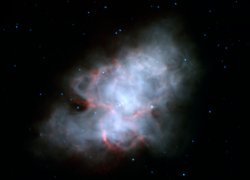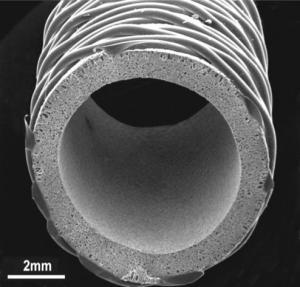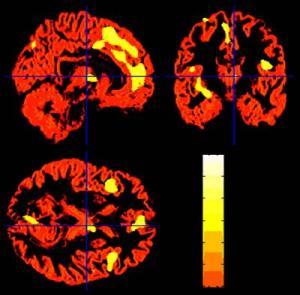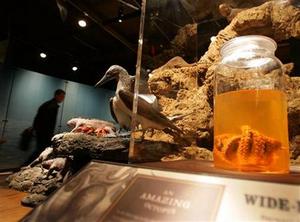Astronomers searching for distant supernovae to probe dark energy in the early universe have unwittingly stumbled upon two relatively nearby objects that may shed light on the early solar system.
One lies in a nearly circular orbit between Uranus and Neptune, while the other may have been kicked out to a much more distant, tilted orbit by a marauding planet that was lost to the solar system long ago.
Astronauts have attached an enormous laboratory to the International Space Station, in a complex operation involving spacewalks and a robot arm.
Employers seeking to decrease interruptions may want to have their workers use instant messaging software, a new study suggests.
A recent study by researchers at Ohio State University and University of California, Irvine found that workers who used instant messaging on the job reported less interruption than colleagues who did not.
The study challenges the widespread belief that instant messaging leads to an increase in disruption. Some researchers have speculated that workers would use instant messaging in addition to the phone and e-mail, leading to increased interruption and reduced productivity.

|
| ©NASA/JPL-Caltech/R. Gehrz (University of Minnesota)
|
| Image Caption: New information about the heart of one of the most famous objects in the sky -- the Crab Pulsar in the Crab Nebula -- has been revealed by an international team of scientists searching for gravitational waves. The team's achievement also is the first direct look into the interior of a neutron star.
|
New information about the heart of one of the most famous objects in the sky -- the Crab Pulsar in the Crab Nebula -- has been revealed by an international team of scientists searching for
gravitational waves. The team's achievement also is the first direct look into the interior of a neutron star.
Researchers at the University of California, San Diego, today announced a new study to quantify the amounts and kinds of information being produced worldwide by businesses and consumers alike. The "How Much Information?" study will be completed by a multi-disciplinary, multi-university faculty team supported by corporate and foundation sponsorship. The program will be undertaken at the Global Information Industry Center (GIIC) at the School of International Relations and Pacific Studies (IR/PS), with support from the Jacobs School of Engineering and the San Diego Supercomputer Center.
"Experts say that we live in an information economy, but how much information is there, and do countries count and value information comparably? The previous generation of studies have reported information as countable bits and bytes, and documented large growth numbers" said IR/PS Dean Peter F. Cowhey. "The next generation of studies will count more precisely the impacts and implications of information growth, and do this internationally," continued Cowhey.
A team of London scientists have taken a major step in making the use of artificial veins and arteries in coronary bypass grafts a reality. Researchers have developed artificial graft tissue by combining man-made materials with human cells to make it elastic and durable and so it can attach to host tissue.

|
| ©S. Tawqeer Rashid
|
| Compliant poly(carbonate-urea)urethane serves as an elastic scaffold that gives the artificial graft its shape.
|
It often turns out there is more to commonplace everyday events than meets the eye. The folding of paper, or fall of water droplets from a tap, are two such events, both of which involve the creation of singularities requiring sophisticated mathematical techniques to describe, analyse and predict. On the positive side, there is much in common between many such singular events across the whole range of scales, from microscopic interactions to the very formation of the universe itself during the Big Bang. In the past these seemingly unconnected events involving singularities have tended to be studied in isolation by different scientists with relatively little interaction or exchange of ideas between them.
Singularities occur at a point of cut off, or sudden change, within a physical system, as in formation of cracks, lightning strikes, creation of ink drops in printers, and the breaking of a cup when it drops. Improved understanding of the underlying mathematics would have many benefits, for example in making materials of all kinds that are more resistant to cracking or breaking. A recent workshop organised by the European Science Foundation (ESF) represented one of the first attempts to unify the field of singularities by bringing together experts in the different fields of application from astronomy to nanoscience, to develop common mathematical approaches.
Healthy adults who were close to the World Trade Center during the terrorist attacks on Sept. 11, 2001, have less gray matter in key emotion centers of their brains compared with people who were more than 200 miles away, finds a new Cornell study.

|
| ©Cornell University
|
| Magnetic resonance imaging of the brains of healthy adults more than three years after Sept. 11, 2001, shows areas that have less gray matter volume in those who were near ground zero on 9/11, compared with those who were much farther away. This is three views of the brain areas that have lower gray matter volume in the 9/11-exposed group. Notably, all of these areas (which show up brighter in this image) are associated with the processing of emotion.
|
LONDON - Speeches and a scientific meeting next month will kick off 18 months of events to celebrate the impact and lasting legacy of Charles Darwin, whose theories on evolution are still causing waves 150 years later.
It was on July 1, 1858 that papers on the development of animals by Darwin and fellow scientist Alfred Wallace were presented to the Linnean Society in London representing the cream of scientific knowledge. They did not go down well.

|
| ©REUTERS/Shannon Stapleton
|
| Specimens are shown at an exhibit marking the work of renowned naturalist Charles Darwin at the American Museum of Natural History in New York November 15, 2005.
|

